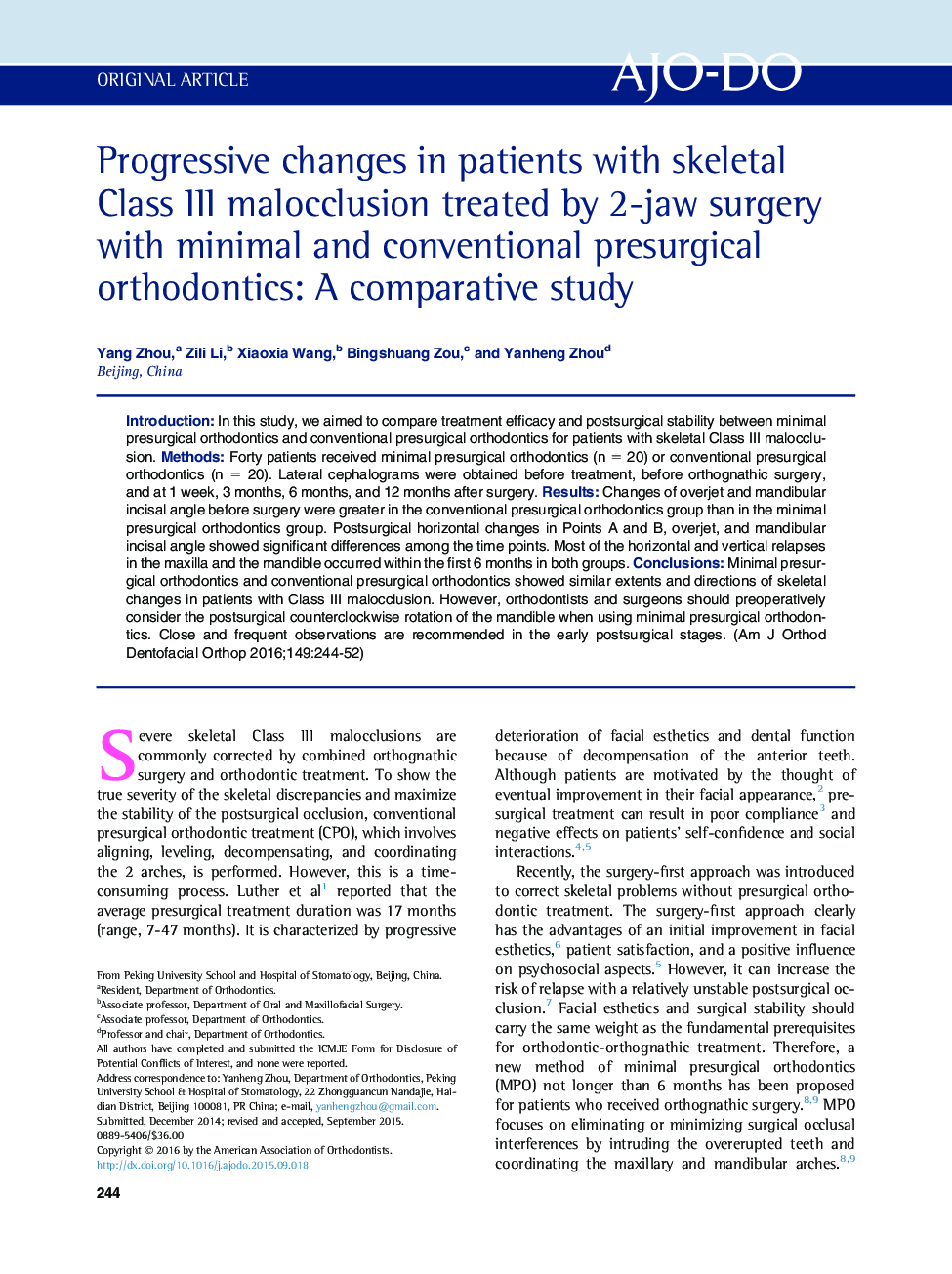| Article ID | Journal | Published Year | Pages | File Type |
|---|---|---|---|---|
| 3115724 | American Journal of Orthodontics and Dentofacial Orthopedics | 2016 | 9 Pages |
•Minimal and conventional presurgical orthodontics for skeletal Class III patients were compared.•Treatment outcomes were assessed after a year.•Skeletal changes were similar in the groups.•Counterclockwise rotation of the mandible should be considered for minimal presurgical orthodontics patients.
IntroductionIn this study, we aimed to compare treatment efficacy and postsurgical stability between minimal presurgical orthodontics and conventional presurgical orthodontics for patients with skeletal Class III malocclusion.MethodsForty patients received minimal presurgical orthodontics (n = 20) or conventional presurgical orthodontics (n = 20). Lateral cephalograms were obtained before treatment, before orthognathic surgery, and at 1 week, 3 months, 6 months, and 12 months after surgery.ResultsChanges of overjet and mandibular incisal angle before surgery were greater in the conventional presurgical orthodontics group than in the minimal presurgical orthodontics group. Postsurgical horizontal changes in Points A and B, overjet, and mandibular incisal angle showed significant differences among the time points. Most of the horizontal and vertical relapses in the maxilla and the mandible occurred within the first 6 months in both groups.ConclusionsMinimal presurgical orthodontics and conventional presurgical orthodontics showed similar extents and directions of skeletal changes in patients with Class III malocclusion. However, orthodontists and surgeons should preoperatively consider the postsurgical counterclockwise rotation of the mandible when using minimal presurgical orthodontics. Close and frequent observations are recommended in the early postsurgical stages.
